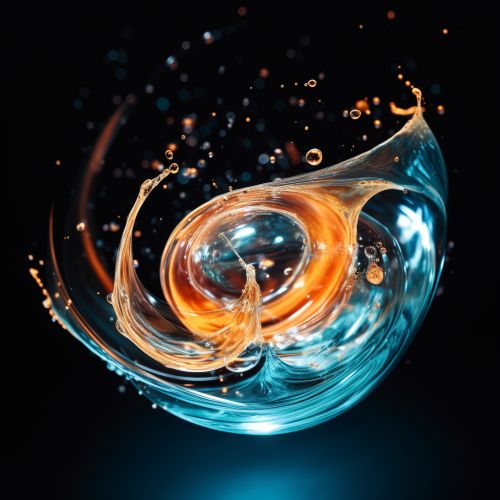The Science of Bubble Dynamics and Cavitation
Introduction
Bubble dynamics and cavitation are fascinating phenomena that occur in a variety of scientific and industrial contexts. These processes involve the formation, growth, and collapse of bubbles in a liquid medium, often with significant energy release and potential for damage or beneficial use.


Bubble Dynamics
Bubble dynamics is the study of the physical processes that govern the behavior of bubbles in a liquid medium. This includes the formation, growth, and collapse of bubbles, as well as their movement and interaction with their surroundings. The behavior of bubbles is influenced by a variety of factors, including the properties of the liquid, the presence of dissolved gases, temperature, pressure, and external forces.
Formation and Growth
Bubbles form in a liquid medium when the local pressure drops below the vapor pressure of the liquid, a process known as boiling or nucleation. This can occur due to heating, agitation, or a decrease in the ambient pressure. Once a bubble has formed, it can grow by absorbing additional gas or vapor from the surrounding liquid. This growth process is governed by a variety of factors, including the rate of heat transfer, the diffusion of gas into the bubble, and the pressure differential between the bubble and the surrounding liquid.
Collapse
The collapse of a bubble occurs when the pressure in the surrounding liquid exceeds the pressure inside the bubble. This can happen due to an increase in the ambient pressure, a decrease in the temperature, or the diffusion of gas out of the bubble. The collapse process can be extremely rapid and violent, often resulting in a shock wave and a flash of light, a phenomenon known as sonoluminescence.
Movement and Interaction
Bubbles in a liquid medium can move and interact in complex ways. They can rise or fall due to buoyancy, be carried along by fluid flow, or be set in motion by external forces. Bubbles can also interact with each other, coalescing to form larger bubbles, or breaking up into smaller ones. These interactions can lead to a wide range of phenomena, from the frothing of a carbonated beverage to the formation of foam.
Cavitation
Cavitation is a special case of bubble dynamics, where the formation and collapse of bubbles occur in rapid succession due to changes in pressure. This can occur in a variety of situations, such as in the wake of a propeller, in a high-speed liquid flow, or in a liquid subjected to intense sound waves.
Types of Cavitation
There are several types of cavitation, including hydrodynamic cavitation, acoustic cavitation, and optic cavitation. Hydrodynamic cavitation occurs in high-speed liquid flows, such as in pumps or propellers. Acoustic cavitation occurs in liquids subjected to intense sound waves, such as in ultrasound cleaning or medical treatments. Optic cavitation occurs in liquids subjected to intense light pulses, such as in laser machining or medical treatments.
Effects of Cavitation
The effects of cavitation can be both beneficial and detrimental. On the negative side, cavitation can cause significant wear and damage to mechanical components, such as propellers, pumps, and valves. This is due to the high pressures and temperatures generated by the collapse of cavitation bubbles. On the positive side, cavitation can be harnessed for a variety of beneficial uses, such as cleaning, mixing, and medical treatments. For example, cavitation is used in ultrasound cleaning to remove dirt and contaminants, in sonochemistry to enhance chemical reactions, and in medical treatments to break up kidney stones or deliver drugs.
Applications
The science of bubble dynamics and cavitation has a wide range of applications in various fields, including engineering, medicine, and environmental science.
Engineering
In engineering, understanding bubble dynamics and cavitation is crucial for the design and operation of many types of equipment, such as pumps, propellers, and valves. Engineers must take into account the potential for cavitation and its effects when designing these components. In some cases, cavitation can be harnessed for beneficial purposes, such as in cavitation cleaning or sonochemistry.
Medicine
In medicine, bubble dynamics and cavitation play a key role in several types of treatments, such as ultrasound therapy and drug delivery. For example, cavitation is used in lithotripsy to break up kidney stones, and in sonoporation to deliver drugs to specific locations in the body.
Environmental Science
In environmental science, understanding bubble dynamics is important for studying a variety of phenomena, such as the exchange of gases between the ocean and the atmosphere, the behavior of oil spills, and the formation of foam on the sea surface.
Conclusion
Bubble dynamics and cavitation are complex and fascinating phenomena that have a wide range of applications and implications. By studying these processes, scientists and engineers can gain insights into a variety of natural and man-made systems, and develop new technologies and treatments.
